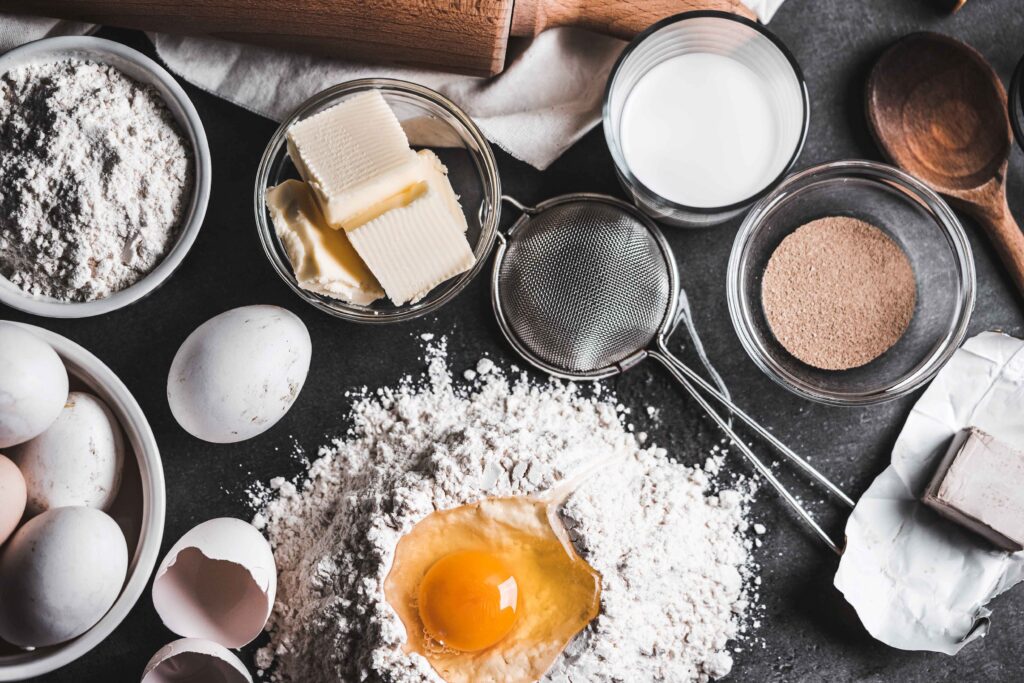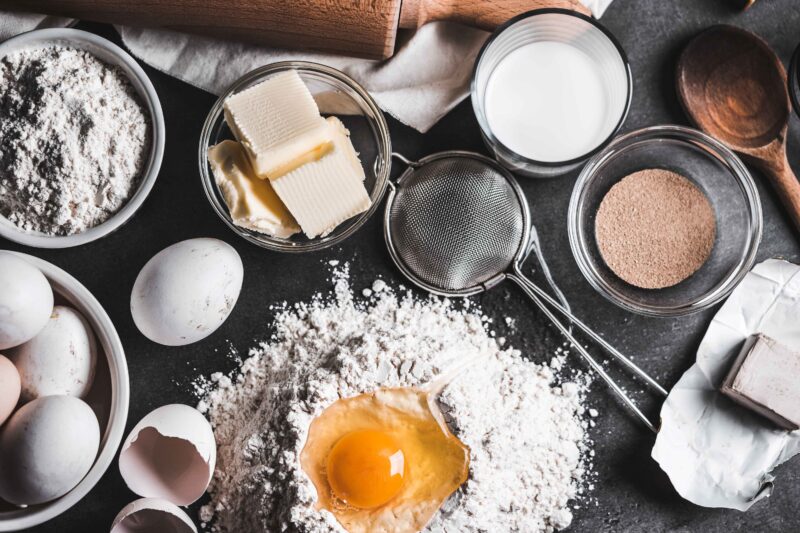
If Covid taught us nothing else, we know for sure that in times of stress, baking is one of the first things we turn to, to take our minds off things and relieve the tension.
There can be little doubt that more banana bread was baked in South Africa (and probably globally!) in 2020 than in any other year before or after that, and while some have discarded their aprons and abandoned their mixing bowls, others have “caught the bug” and continued making cakes, biscuits, breads and other baked goods.
Not only can the process of creating something to eat from scratch be very therapeutic, but enjoying a special treat with friends and family is also a good way to bring a little moment of happiness into the otherwise dreary routine of everyday life.
Two of the increasingly popular courses amongst students at Capsicum Culinary Studios’ six campuses across South Africa, are the one-year full-time or part-time Professional Patisserie Programme and the six months full-time Assistant Baker Skills Programme.
Candice-lee Clark, new campus head at the Rosebank, Johannesburg campus says: “We are finding that more and more students are signing up for our patisserie and baking programmes because the scope for a student pursuing a career in the industry is very versatile in terms of future job opportunities. The baking sector is a huge umbrella which includes multiple specialised divisions, be it breads, pastries, chocolate, customised cakes and more.
“Many Capsicum alumni who graduated from the school’s baking programmes are not only working for top establishments both at home and abroad, but several have also started their own businesses and are doing exceptionally well.”
One such alumnus is Hendrik Pretorius who worked for several 5-star restaurants and hotels in Dubai before being offered a job as head pâtissier at a highly regarded eatery called Simpli which is located in Lisbon, Portugal.
At the end of 2022, Pretorius left Simpli and, together with two partners, co-founded Quest Coffee Lisbon, a speciality coffee shop serving micro-lot coffee from around the world and a range of cakes, cookies and other marvellous pastries.
Pretorius has also written his first cookbook, The Sweet Side of Life, which he hopes will be published this year.

We asked him to share his top tips for becoming a better baker as well as an easy-to-make recipe and here’s what he sent us:
- Always read the recipe before beginning. This will help you know the how, why, where and when or what you are about to do. It will only take a few minutes but could save you from wasting ingredients on a disastrous result.
- Always have ingredients prepped. Read through the ingredient list and have them prepared on your counter. Mise en place is a French term that means ‘to put everything in its place’ and refers to getting everything prepared and in place ready for baking.
- Measure correctly and carefully. This is one of the most important tips. Baking is a science so successful baking requires precision. Unlike cooking, you can’t just bake something by throwing ingredients together and hope for the best. Measure dry ingredients in proper measuring cups or spoons because they are specially designed for dry ingredients. Also spoon and level dry ingredients, which means using a spoon to fill the cup and level it off. This is especially important with flour. Scooping flour (or any dry ingredient) packs that ingredient down and you could be left with much more than needed, and a dry, unpalatable end product. For liquid ingredients, use clear liquid measuring cups or jugs. An electronic kitchen scale is invaluable to get 100 percent correct weights every time.
- Room temperature ingredients is key. If a recipe calls for room temperature eggs or dairy ingredients such as milk, cream or yogurt, ensure you adhere. It’s impossible to cream cold butter into a soft consistency necessary for some recipes and the same goes for eggs which add more volume to the batter when at room temperature. Also, always use the correct butter consistency stipulated in the recipe. Most recipes call for room temperature butter which means when you press it, your finger will make an indent but not sink into the butter. To get that perfect consistency, leave the butter out for 60 to 90 minutes beforehand. Cold butter is butter straight from the fridge, while melted butter should be liquified and lukewarm. If it is too hot it can cook the eggs in your batter.
- Use unsalted butter. Always use unsalted butter unless the recipe specifies otherwise. The added salt in salted butter affects the flavour and changes the way the glutens in flour develop, which can affect the consistency of the dough.
- Always use fresh ingredients. Top priority here goes to chemical leavening agents like baking powder and baking soda because they lose much of their effectiveness after about six months, meaning your baked goods won’t rise the way they should. Spices like cinnamon, nutmeg and cloves will also lose their potency, especially the pre-ground kind, so it’s important to always use fresh ingredients.
- Invest in an oven thermometer. Very often oven temperatures can be out by as much as 20°C which can affect the baking times given in the recipe and result in under- or over-baked goods. Invest in an inexpensive oven thermometer and place it in the centre of your oven so you always know the exact temperature.
- Keep the Oven Door Closed! As tempting as it is to look inside to see how things are going, keep the oven door closed until the bake is done in order to keep a consistent temperature throughout. If you’re baking a cake, the influx of air or even the vibration of the oven door can cause it to sink in the middle.

Hendrik Pretorius’ Chocolate Lamingtons
Ingredients for the Vanilla Sponge
400g sugar
4 large eggs
240ml sunflower oil or vegetable oil
1 teaspoon vanilla extract
420g all-purpose flour
1 tablespoon baking powder
1 teaspoon salt
120ml milk
For the Chocolate Syrup
75g cocoa powder
360ml hot water
600g sugar
15g unsalted butter
Desiccated coconut
Method
Preheat oven to 180°C and place a rack in the middle. Spray and line the bottom and sides of a 25cm x 30cm x 5cm baking pan with baking paper. In a standing mixer fitted with a whisk attachment, beat the eggs on high speed and gradually add the sugar until the mixture is thick and light (about 5 mins). When the mixture reaches the ribbons stage (check by lifting the whisk out of the mixing bowl and the mixture falls back into ribbons) continue to mix and add the oil, vanilla extract and milk until just combined. Don’t overmix or the eggs will deflate. Remove the mixing bowl from the mixer. Sift together the flour, baking powder and salt and gradually sprinkle it into the egg mixture and gently fold in until well combined. Scrape the batter with a rubber spatula into the prepared baking pan and bake for 40-45 minutes. When done, the cake should be a light golden-brown colour on top and should spring back when you touch it gently in the middle. Remove from the oven and let it cool down on a wire rack. While it is cooling, make the chocolate syrup.
In a medium saucepan combine the hot water, sugar and cocoa powder and bring to a boil while stirring constantly. Remove from heat and add the butter. Mix thoroughly and set aside.
To assemble the lamingtons, remove the sponge from the baking pan by running a knife along the sides of the pan then turn it upside down on a cutting board. Remove the baking paper and flip the cake so the right side is up. Using a long, serrated knife even off the top of the cake and trim the sides equally before cutting it into 5cm squared pieces. Using tongs, pick up a sponge square, dip it into the chocolate syrup until well covered, then transfer the square to a plate of desiccated coconut and roll it around until covered all over. Repeat until all squares are done.



